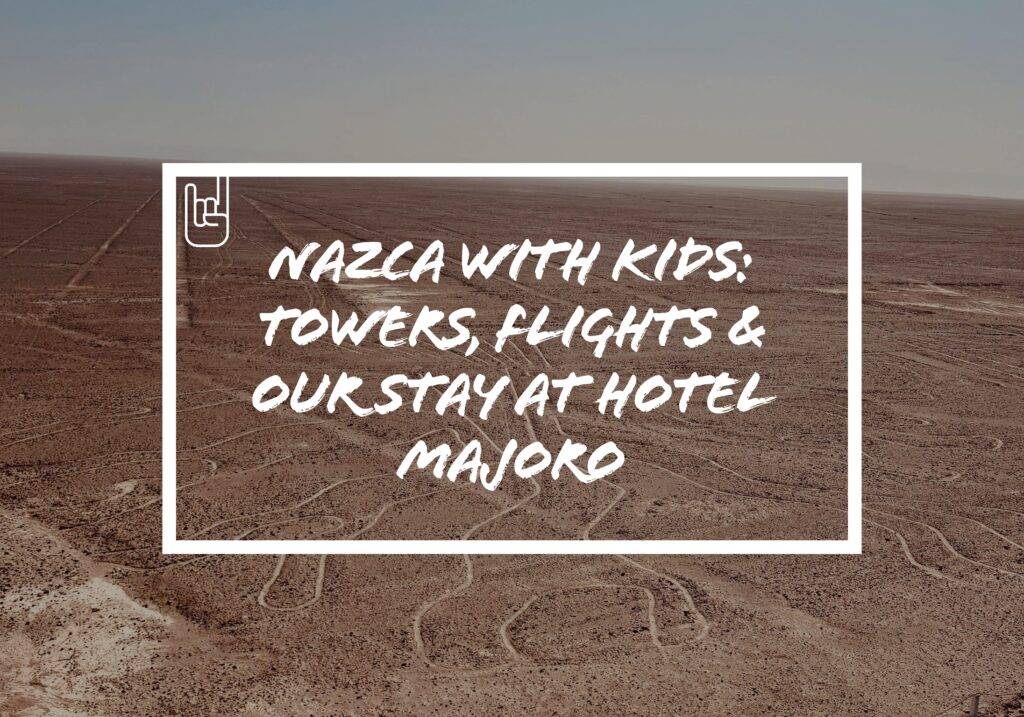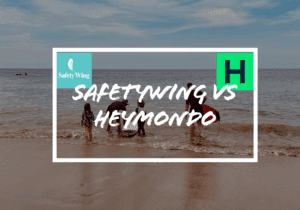Nazca With Kids: Towers, Flights & Our Stay at Hotel Majoro
Nazca, southern Peru, desert town on the Pan-American Highway, known for its ancient geoglyphs and the quiet haciendas that still sit just beyond the dunes.
Updated: November 2025
Visited: Nazca, Peru (Oct 2025)
Family travel, long-term route through South America
We left Ica just after breakfast, backpacks wedged between the the footwells and full boot of the Uber we decided to book for this 2-3 hour journey through the desert. The math worked: cheaper than four bus tickets, faster, and far less chaos. The driver didn’t hesitate when we added two stops, first at the Nazca Lines towers, then at our hotel just outside town. Once we cleared the last bit of traffic, the highway opened wide and empty, the desert stretching flat and endless under a hard blue sky.
Nazca was never meant to be a headline stop. It was a breather. After the adventures of Ica and constant movement through southern Peru, we wanted quiet. We’d talked about the flight over the Nazca Lines, but the idea of forty minutes in a tiny plane with two motion-sensitive kids killed the thrill. Instead, we’d see what could be seen from the ground, eat somewhere unhurried, and sleep well for the first time in days.
Hotel Majoro became that pause, a sprawling hacienda on the edge of town, faded yellow walls wrapped in vines, a pool glinting in the afternoon heat.
Why trust this: Family of four, October 2025. S/18 for tower entry for family of four. S/130 Taxi to get from Ica to Nazca. Two nights at Majoro: roughly £150 including breakfast and peace.
Nazca Family Travel Essentials
Altitude / Nazca sits almost at sea level, so you’ll finally get a break from Andean altitude headaches. Expect dry desert heat instead, hats, sunscreen, and water bottles are a must.
Getting In / From Ica it’s a 2–3 hour journey through the desert. For families, booking a private transfer or Uber is often cheaper and faster than four bus seats, plus you can add stops at the Nazca Lines towers along the way.
Nazca Lines Viewpoints / Two easy ground options: the metal towers along the Pan-American Highway (S/18 for a family) and the Natural Lookout “El Gato”, both showing clear shapes without the pricey flight.
Flights Over the Lines / If you want the full aerial view, scenic flights depart daily from the Nazca airport. They run 30–60 minutes, can be bumpy, and cost around $80–$120 pp. This option is a 35 minute flight has has great reviews
Where to Stay / The standout family stay is Hotel Majoro, a peaceful hacienda with a pool and wide lawns just outside town. Expect vintage charm over polish. We chose this stay and we absolutely loved it.
Short on Time? / You can see both towers and the Natural Lookout in under an hour, then unwind back at your hotel before catching the night bus to Arequipa.
Parent Tip / Go early morning or late afternoon for the best light on the lines, and bring small bills for entry. Strong wind on the stairs, keep kids in front and hold the rail.
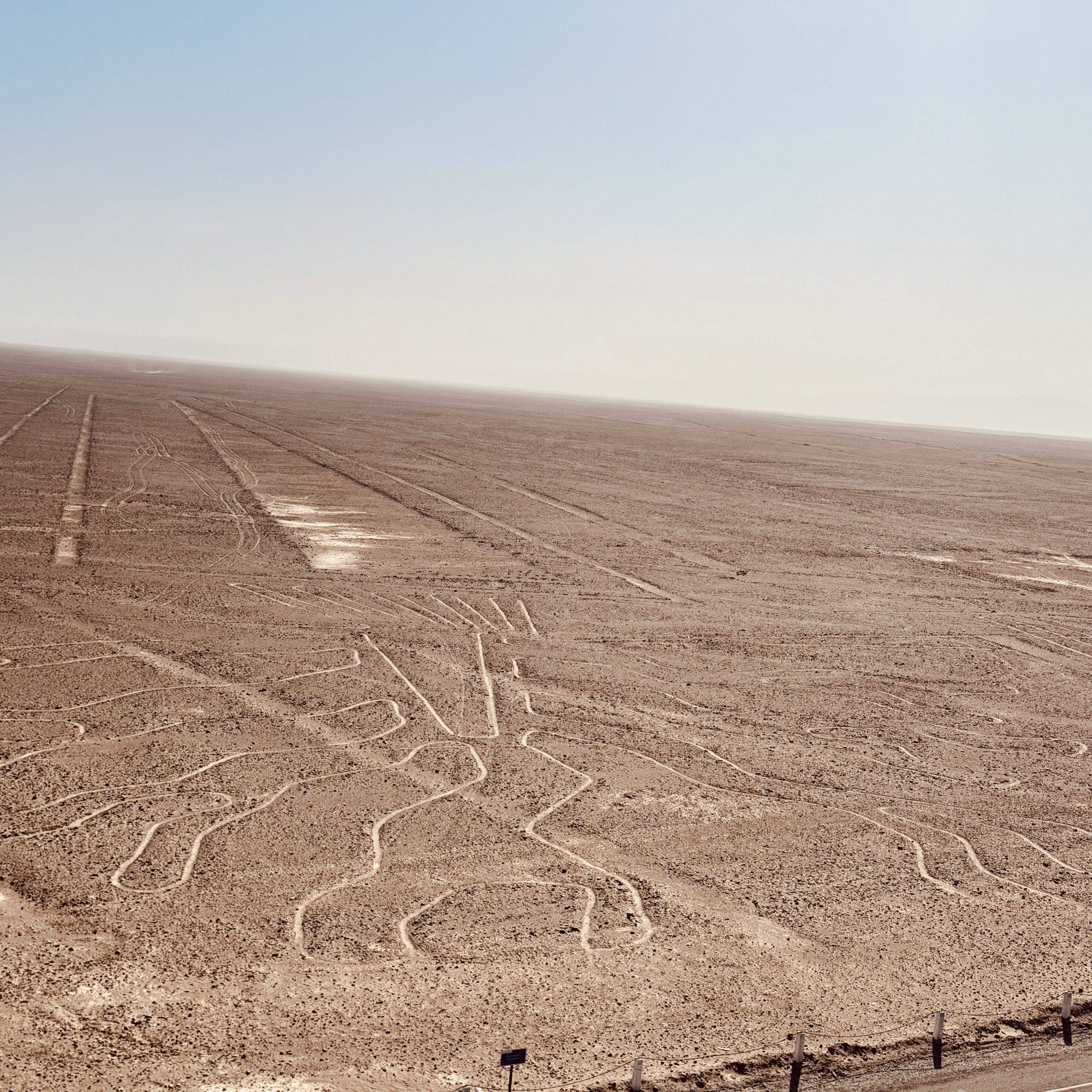
In this ultimate Family Guide to Nazca and the lines, I give tips on best places to eat, where to stay, how to get around and below are some of the tools I use:
🚗 Getting around: You can Rent a car or use Uber to get around.
📱 Data: Buy an Airalo eSIM before you fly.
🛡️ Insurance: Lightweight family insurance coverage
Getting There (Ica → Nazca: Uber vs Bus)

Most people take the Cruz del Sur bus from Ica to Nazca. It’s easy, predictable, and cheap if you’re solo. But with four seats, luggage, and a family that doesn’t exactly thrive in terminals, we tried something different. I opened the Uber app out of curiosity, half expecting no drivers, and one accepted within minutes. He quoted about S/130 total. By the time I priced four bus tickets plus a taxi on each end, Uber was around S/50 cheaper and shaved nearly two hours off the trip.
The drive itself is oddly soothing: endless ochre desert, the odd billboard for pisco or copper mines, small roadside stalls that look abandoned but aren’t. The kids counted vultures, then dozed off. Somewhere south of Palpa, the dunes start rising again, sculpted and pale. That’s when you start seeing signs for the Líneas de Nazca.
Our driver didn’t mind the detour to the towers. He waited while we climbed up, took photos, and then drove us another fifteen minutes to Hotel Majoro, a faded colonial hacienda at the edge of town. No lugging bags through the plaza, no ticket counter queues, no elbowing for the right bus bay.
If you’re alone or staying near the Plaza de Armas, the bus still makes sense, it’s safe and comfortable enough. But for families, or anyone wanting flexibility, Uber is the secret option nobody talks about.
Tip: Confirm both stops in the app chat before departure, and make sure you’ve got a local SIM or eSIM signal after Ica, there’s a stretch of blank coverage near Palpa.
Nazca Lines: Flight vs Viewpoints
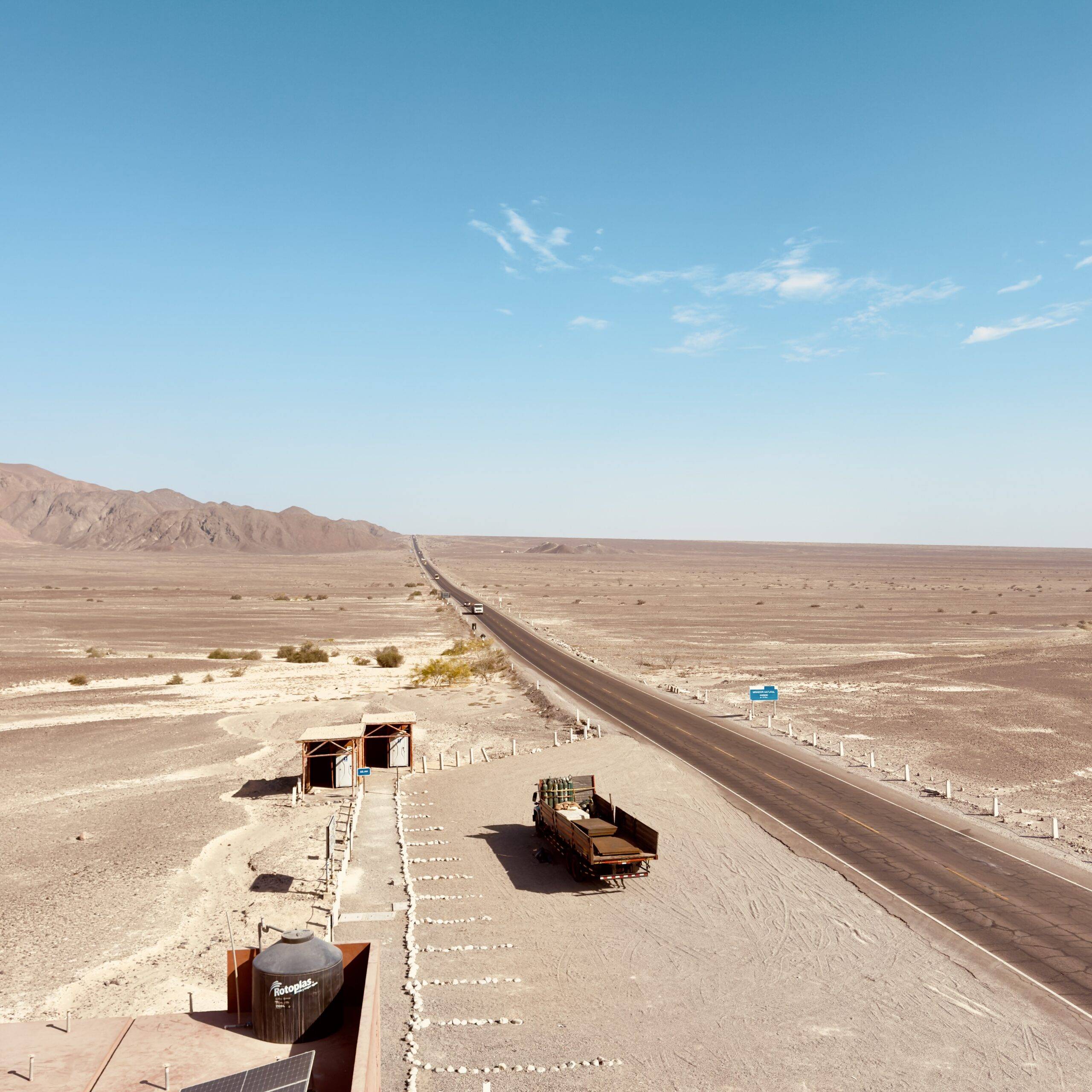
Every guidebook sells the flight first.
“See the mysterious geoglyphs from above!” “Once-in-a-lifetime aerial view!”
And maybe it is. But when you’re traveling with two small humans and a budget that already stretched thin between buses, sand buggies, and hotel breakfasts, the idea of a pricey, queasy half-hour in a prop plane loses its glow.
We decided to stay grounded. Literally.
The two roadside towers sit off the Pan-American Highway, twenty minutes north of town. The first thing you notice isn’t the lines, it’s the wind. Hot, dry air blasting across the asphalt, trucks groaning past while you climb narrow steel stairs. From the top, though, the desert shifts. The shapes appear like ghosts scratched into the earth: The Hands, The Tree, The Lizard, massive, deliberate, fragile. You can’t see everything, but you see enough to understand that this isn’t graffiti. It’s a message carved for the sky.
Further along the road, a short dirt track leads to a low ridge known as The Cat, a natural lookout with one distinct figure visible even without the tower. It’s free, quiet, and oddly moving. The kids picked out the shape faster than we did.
So, is the Nazca Lines flight worth it?
If you crave the complete map, can stomach the turbulence, and don’t mind spending hundreds, yes. But for most families, the towers and natural viewpoint tell the story well enough, for about the price of an ice-cream run.
| Option | Time on site | Cost (family of 4) | What you see | Kid suitability
|
|---|---|---|---|---|
| Roadside towers | 15–30 min | S/18 | 2–3 figures | Easy |
| Natural lookout (The Cat). | 15–25 min | Free | 1 figure + desert view | Easy (watch road) |
| Flight | 30–60 min | $$$ | Dozens of figures | Depends on motion tolerance |
How to See the Nazca Lines From the Ground (No Flight)
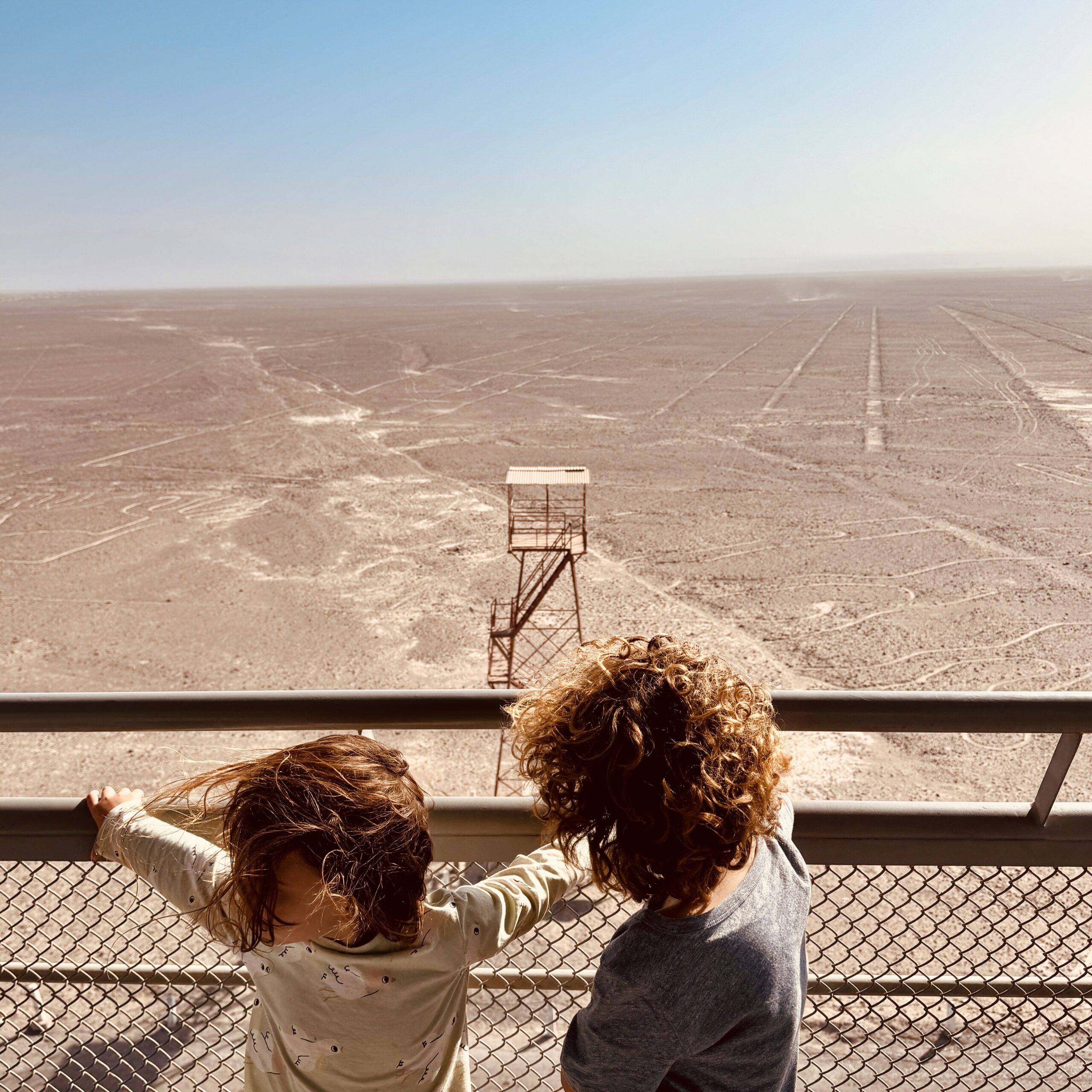
If you’re skipping the flight, the good news is you can still see the Nazca Lines, properly, clearly, and without needing a barf bag. The towers make it official; the desert itself does the rest.
The Roadside Towers

Two metal miradores stand side by side, a short drive apart, each with a rickety charm that says “built before health and safety became a thing.” The entry hut collects a few soles, and that’s it—you’re free to climb. From halfway up, the patterns start appearing, faint at first, then unmistakable. “The Tree” fans out to one side; “The Hands” reach awkwardly into the sand; part of “The Lizard” lies bisected by the highway.
It’s surreal watching trucks thunder straight over a 2,000-year-old geoglyph. The scale is hard to process. You stare, take a dozen photos, then realise the best picture is the one you took in your head.
A few tips: wear hats, bring water, and hold the rail firmly—wind gusts are no joke. Kids should stay in front of you on the stairs; the rail spacing is wide. There’s a small stall selling cold drinks at the base, but not much shade.
Best light: 9–10 a.m. or from 4 p.m.; noon glare washes out the lines.
The Natural Viewpoint “The Cat”
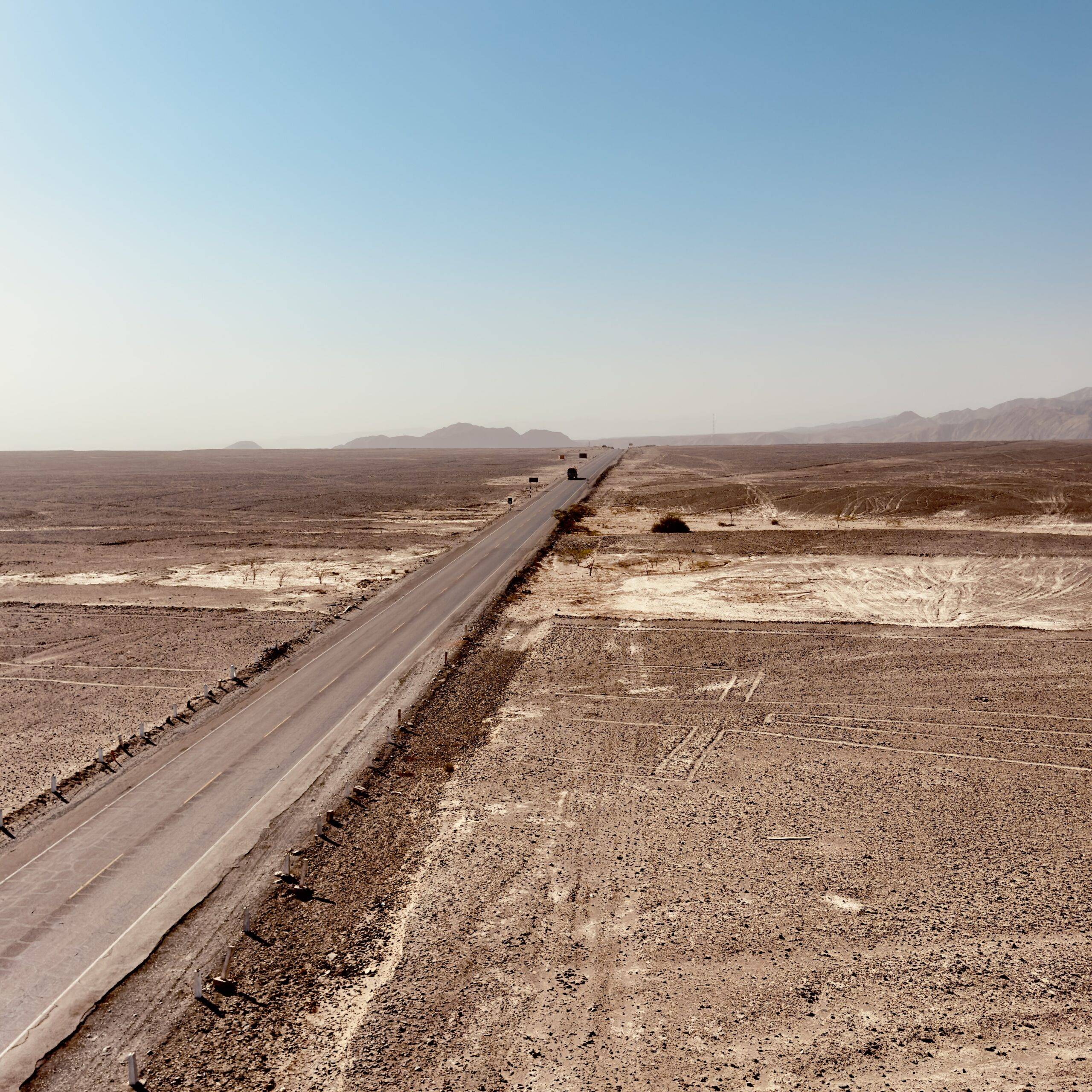
A little further south lies a natural hill viewpoint you can climb for free. It’s a five-minute walk up a gravel slope, nothing dramatic. From there, you see “The Cat,” newly uncovered and still sharply outlined. The desert stretches endless in every direction, silent except for wind and the faint hum of trucks on the highway.
We stayed maybe twenty minutes. The kids tried tracing the lines with their fingers in the air. The light kept shifting, grey, then gold, then gone. If you come mid-morning or late afternoon, the angle is perfect; noon glare washes everything out.
Bring a polarising filter if you’ve got one, or just switch off HDR on your phone. The contrast is better that way.
Things To Do in Nazca (Besides the Lines)

Once you’ve climbed the towers and stared at the desert long enough to feel slightly hypnotised, the question becomes: what now? Nazca isn’t exactly bursting with attractions, but it has a certain dusty rhythm that grows on you once you stop expecting Cusco-level charm.
We started simple, with a slow wander through the Plaza de Armas at sunset. It’s small, a few benches under palm trees, kids kicking a ball, the sound of a blender from a juice stand. The mountains turn rose-pink behind the church, and for half an hour everyone just breathes. After weeks of moving, it felt good to sit still.
If you’ve got extra time in Nazca, it’s worth adding a stop at Museo Antonini. It’s a small, easy-to-miss museum that tells the story of how the Nazca people survived in a place that almost never rains, part archaeology, part engineering lesson. Inside you’ll find scale models of the Cantalloc aqueducts, those spiral wells that twist deep into the ground to reach hidden water.
If that kind of ingenuity grabs you (or the kids), you can hire a short taxi ride to see the real aqueducts just outside town. They’re still functioning after nearly two thousand years, built from stone and clay, quietly defying the desert every single day.
Lunch and coffee came from Mom’s Café, right near the bus terminal. Think panini, cakes, decent espresso, and air-conditioning, gold in this climate. It became our unofficial base before the night bus.
If you’re hanging around longer, there are tours to the Cahuachi Pyramids, though the road out is rough. Otherwise, Nazca is best treated as a 24- to 36-hour pause between the coast and the Andes. Enough time to stretch, swim, and remember that not every stop has to be extraordinary to be worthwhile.
Where We Stayed: Hotel Majoro
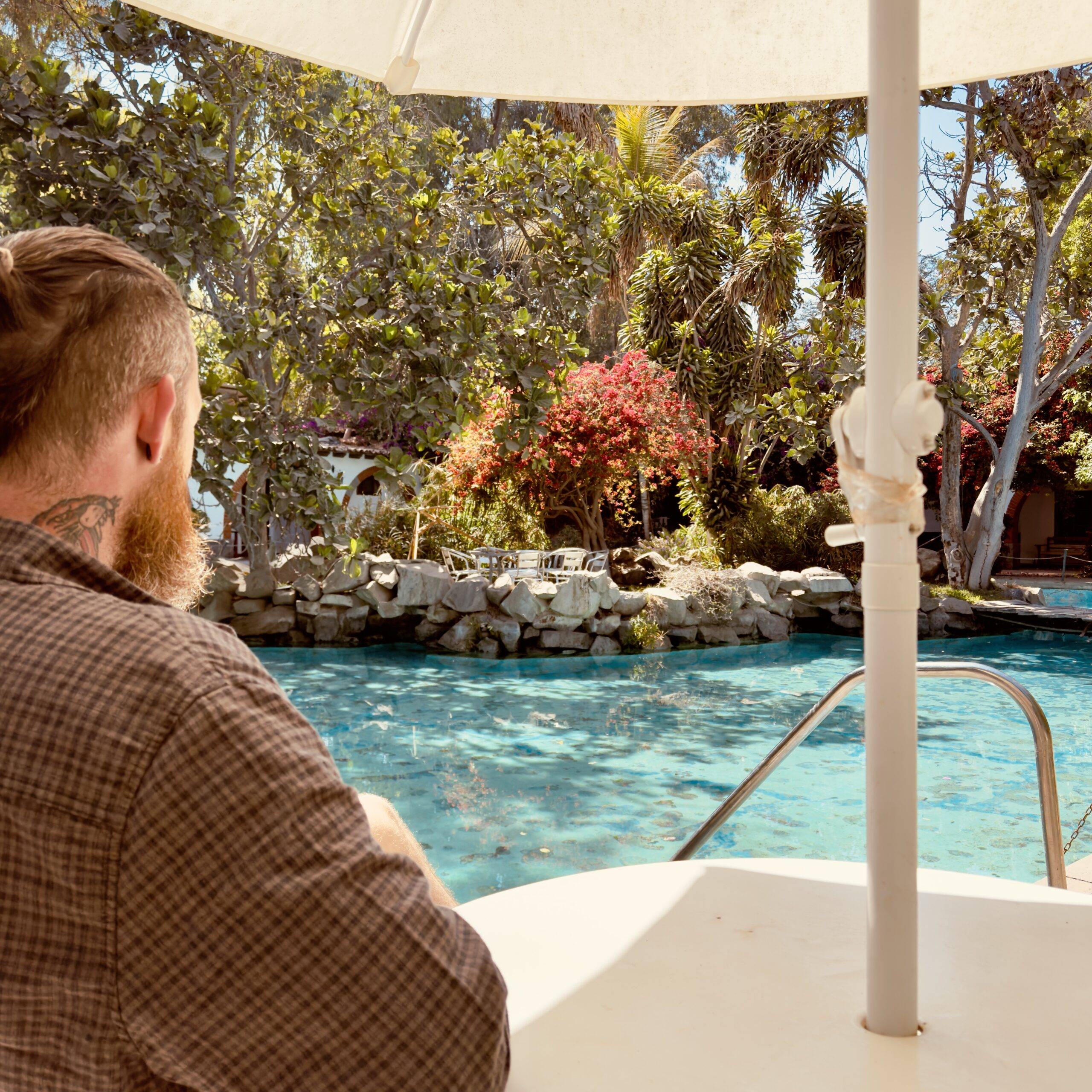
Hotel Majoro sits just outside Nazca, far enough that the night feels properly dark and the air smells faintly of dust and flowers. The driveway alone could tell stories, palm trees, cracked statues, a gate that opens like you’re arriving at a film set that forgot it was finished decades ago. Inside, the pace slows immediately.
The building is an old hacienda, once a working estate, now a wide sprawl of courtyards, tiled halls, and quiet corners. Our room was simple: high ceilings, heavy shutters, beds that creaked but didn’t complain. In the mornings, the kids padded barefoot across cool stone floors toward the breakfast table, fresh bread, papaya juice, strong coffee served in chipped cups. A few minutes later the pool would sparkle empty under the sun, and by mid-day it became our entire plan.
Evenings at Majoro are their own mood. Warm wind, frogs starting up somewhere beyond the lawns, a glass of S/8 wine on the terrace while laundry hung drying on chairs. The bar stays open late but never loud. One night a storm flickered behind the mountains; everyone stopped talking just to watch.

Why it worked: space. After small hostels and noisy towns, we finally had room to exhale. The kids chased butterflies between citrus trees while we caught up on messages.
Costs we paid: roughly £150 for two nights including breakfast; meals from S/20; wine S/8.
What to expect: vintage charm over modern polish; service that appears slowly but kindly; patchy Wi-Fi; long, echoing hallways that make you whisper without knowing why.
Watch-outs: it’s well outside town, plan errands in batches and bring snacks or cash. But for families needing a reset, this is the place that quietly hands it to you.
Morning coffee on the terrace, birds louder than traffic, the desert already warming, this was the version of Nazca we hadn’t known we were looking for.
Our 1–2 Day Nazca Plan
We kept Nazca simple on purpose. After weeks of zigzagging through Peru, it felt right to let a place be what it was, quiet, dusty, slower than anywhere else on our route.
Day 1: Arrival + Towers + Hacienda Reset
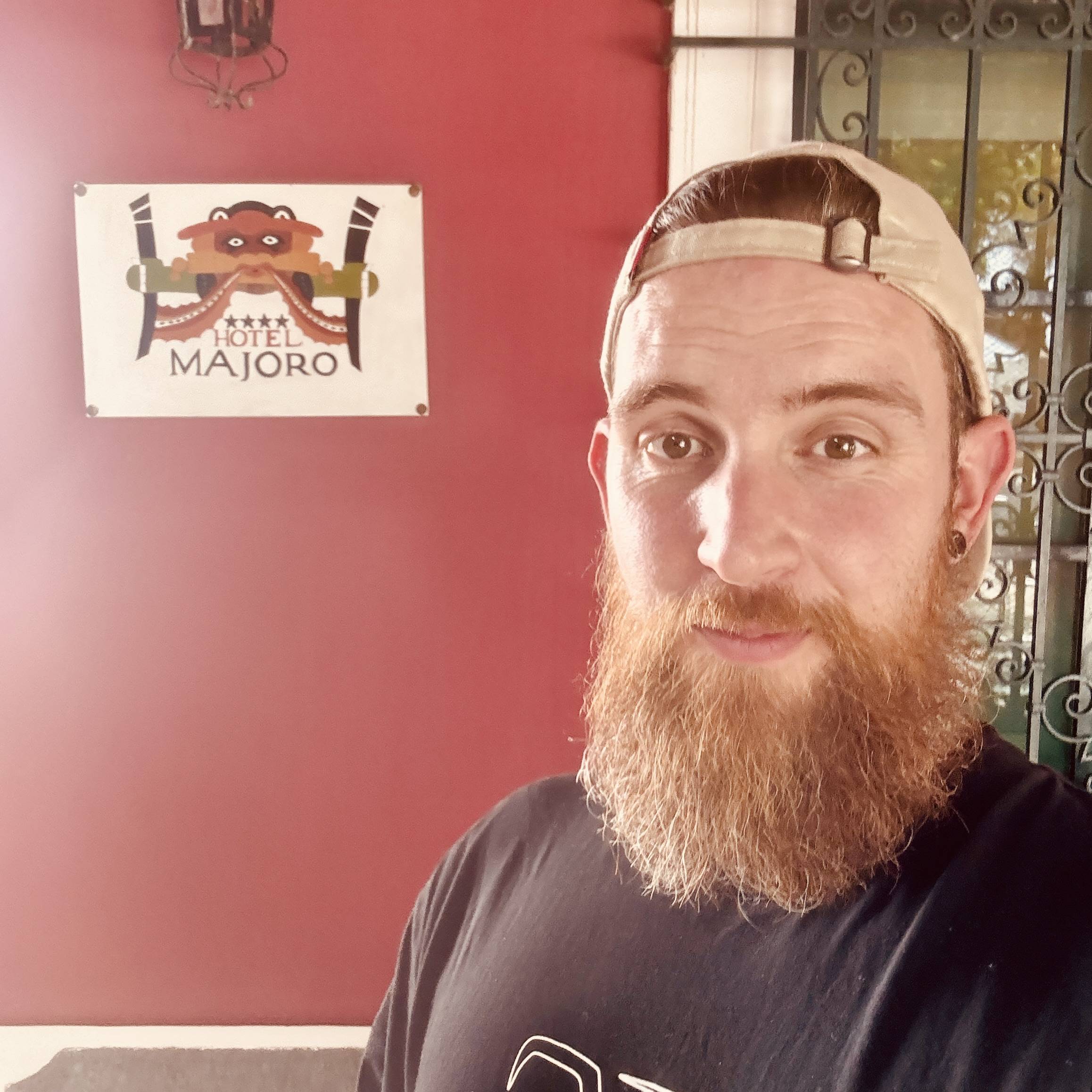
Our Uber from Ica dropped us straight at the Nazca Lines towers before check-in. We paid the S/18 family fee, climbed, stared, took photos we’ll probably never print, and then stopped at the natural lookout nearby. It was over in less than an hour, which was exactly enough. The kids were hungry, the sun was getting sharp, and we still had the hotel pool waiting.
By mid-afternoon, we’d reached Hotel Majoro, checked in, and stopped pretending to have plans. The rest of the day drifted: swims, naps, a slow dinner under string lights, and early bed.
Day 2: Town + Transition
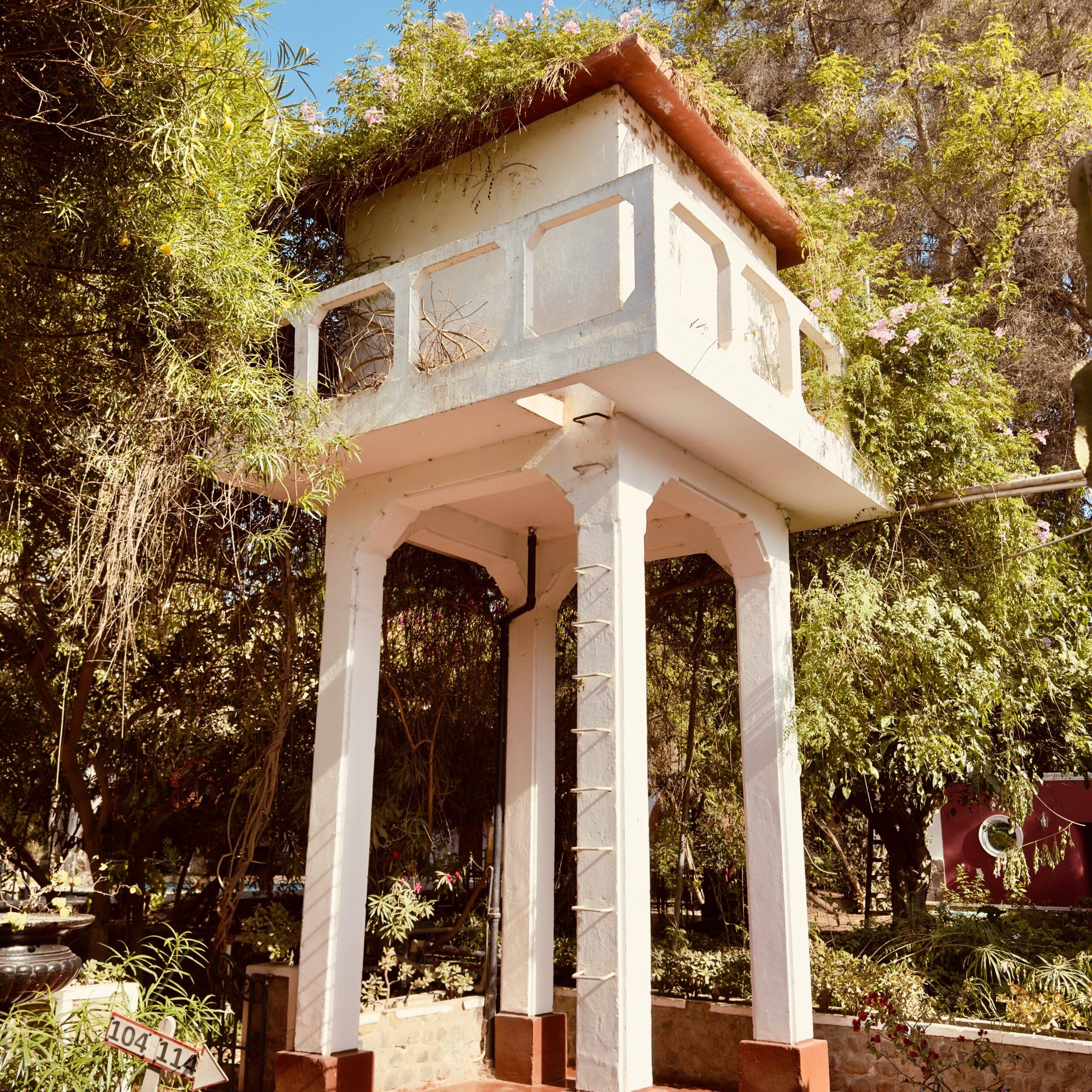
Breakfast was unhurried, fresh bread, fruit, coffee. We packed slowly, then headed into Nazca town for a short wander. Plaza de Armas, souvenir stalls, a round of juices, and back to Mom’s Café by the terminal for paninis and cake before the bus.
The night bus to Arequipa was listed at ten hours; ours stretched to twelve. Bring neck pillows, snacks, and patience. We arrived at dawn, crumpled but intact.
Nazca doesn’t demand more than two days, and it shouldn’t. One day for the lines and the quiet, another to reset before the Andes. If we’d rushed it, we’d have missed the best part—the silence between things.
Onward Travel: Night Bus to Arequipa (What We Wish We Knew)
By the time we rolled our bags to Nazca’s tiny terminal, the desert heat had faded into that sharp evening chill that comes out of nowhere. The Arequipa night bus was supposed to leave at 8:30 p.m., ten hours, “cama semi” seats. In theory, comfortable. In practice, a test of endurance.
We did everything right beforehand, ate early at Mom’s Café opposite the terminal (good panini, cold drinks, strong coffee), stocked snacks, brushed teeth in the café bathroom, changed the kids into pyjamas. You learn these little rituals when travel days blur together.
The bus left on time, then immediately hit roadworks. Twelve hours later, we pulled into Arequipa two hours late, all four of us folded into awkward origami shapes. The seats reclined, yes, but only halfway; bring neck pillows and layers. The air-conditioning swung between sauna and freezer. Every couple of hours someone new boarded, and the driver blared announcements no one understood.
If you can, book “cama total” (fully reclining) on a reputable line like Cruz del Sur. It’s pricier, but your spine will thank you. And double-check the arrival time with your accommodation. Arequipa mornings are cold, and most check-ins don’t start until after 11.
We learned our MVD rule, Minimum Viable Day—the hard way: when you arrive after a night bus, the first day doesn’t count. Eat something warm, shower, nap. Everything else can wait.
Despite the rough ride, that dawn arrival over the Misti volcano was worth it. The city lights faded, pink sun hit the snowcap, and the kids pressed faces to the window like it was magic again. That’s travel in Peru, half patience, half wonder, often in the same minute.
Message your Arequipa stay from the bus; many will hold bags early if rooms aren’t ready.
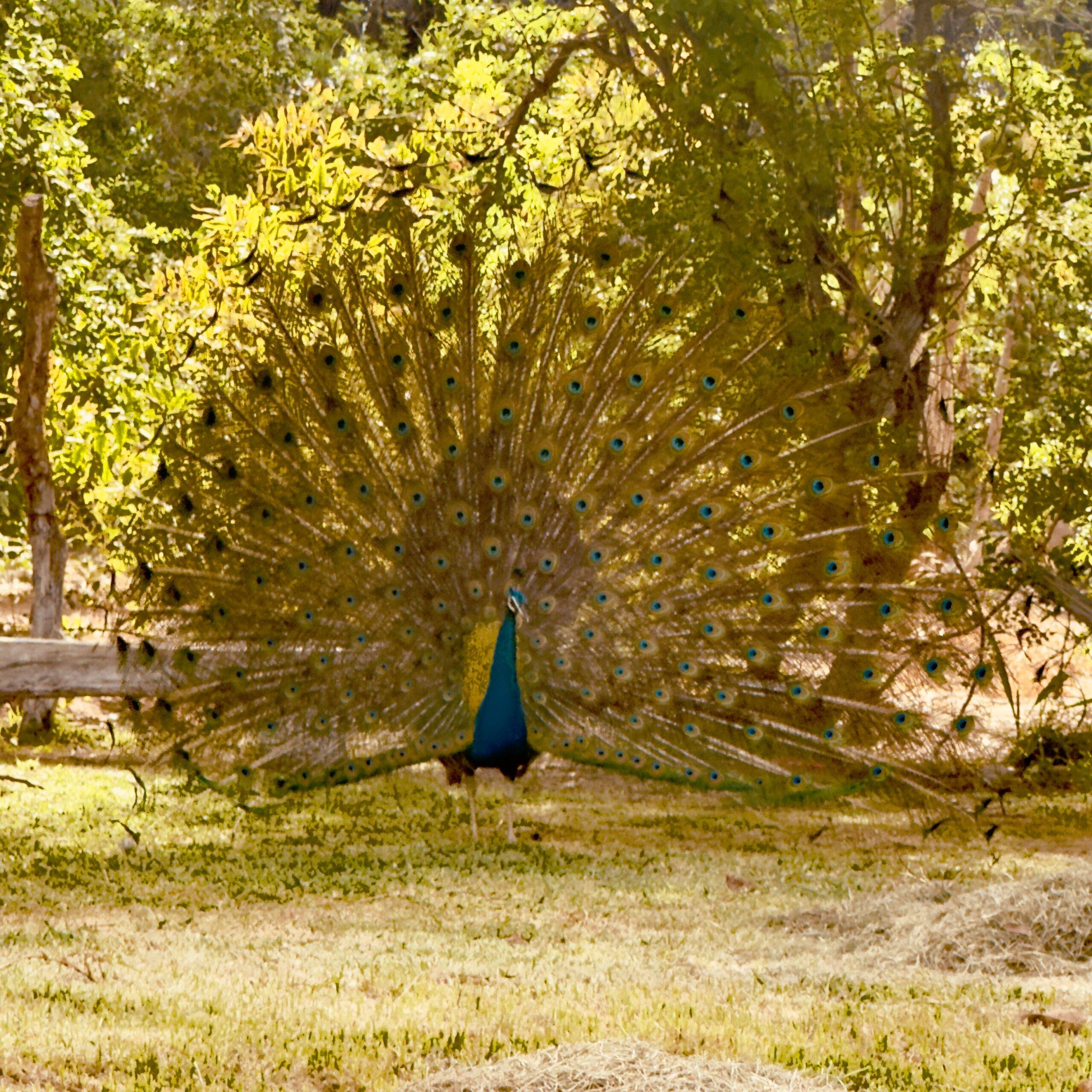
Costs We Paid (so you can benchmark):
Uber Ica → Nazca (two stops): ~S/50 cheaper than four bus tickets + faster. So S/130 in total
Mirador towers entry: S/18 (family total).
Hotel Majoro: ≈ £150 / 2 nights (breakfast included).
Meals at Majoro: from S/20; wine S/8.
Night bus Nazca → Arequipa: 12 h (listed 10 h).
Earlier Ica sandboarding: S/220.
Use these as ballpark numbers; your mileage will shift with season, bus class, and how much ice cream the kids negotiate.
FAQ about the Nazca Lines
Is the Nazca Lines flight worth it with kids?
It depends on motion tolerance and budget. You’ll see far more figures from the air, and the full map finally makes sense. But flights are short, not cheap, and can get bumpy. With younger kids or tight budgets, the ground viewpoints deliver a satisfying taste without tears.
How many lines can you see from the ground?
From the two roadside towers, plan on 2–3 figures—commonly The Hands, The Tree, and part of The Lizard. From the natural lookout, you’ll see The Cat etched into the slope. It’s enough to grasp the scale and intent, even if you don’t get the bird’s-eye puzzle.
How long do you need in Nazca?
For families, 24–36 hours is perfect: lines + lookout on day one, pool + museum/aqueduct or a simple town wander on day two, then the night bus onward.
Are the Nazca Line towers safe?
They’re sturdy but exposed. Strong wind, open metal stairs, big trucks on the highway below. Hold the rail, keep kids in front, and you’ll be fine.
What’s the best base, town or hacienda outside?
Town: easier for tours, quick errands, walking to the plaza.
Hacienda (like Hotel Majoro): quiet, pool, space—a better reset between long travel days. You’ll take taxis for town runs, so plan errands in batches.
Can you do the towers on a long drive-by without staying overnight?
Absolutely. If you’re transiting the Pan-American, pull over, climb, and be back on the road in under an hour. Add the natural lookout if the light’s good.
Do you need advance tickets for the flight?
Peak season can book up. If you’re fixed on flying, reserve a morning slot (smoother air). Otherwise, decide on the ground after checking prices + weather.
Final Thoughts as A Travelling Family
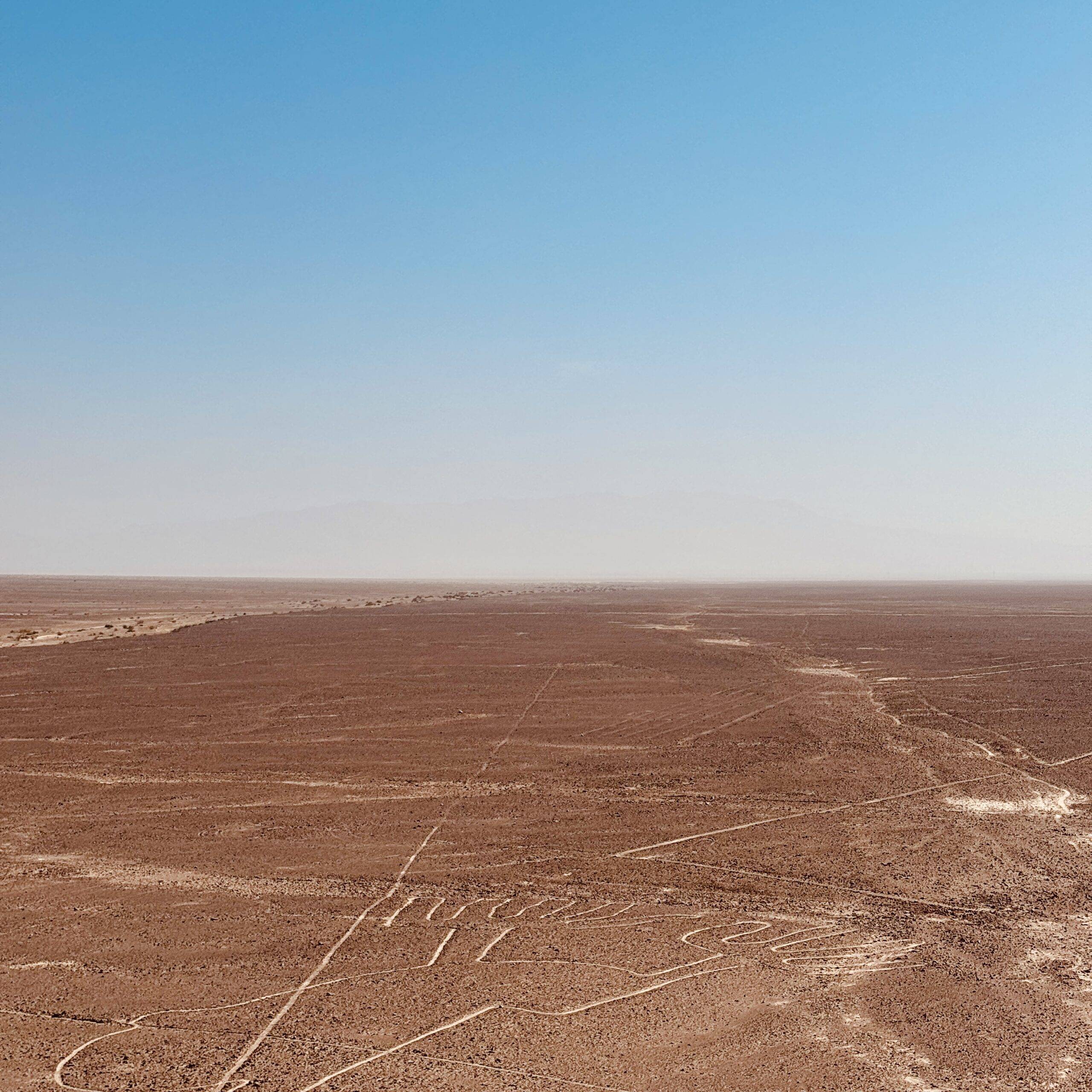
Nazca rewards restraint. See the lines, yes, feel that jolt when the first shape jumps out of the desert, but then let the place be small and slow. Swim. Read. Walk the plaza at sunset. Eat something simple. Sleep early. In a trip stacked with showstoppers (Huacachina, Arequipa, the Altiplano), Nazca is the white space that makes the bolder colours stand out.
If you’re mapping a family route through southern Peru, this is how we’d stitch it:
Before Nazca: our Ica & Huacachina guides and buggies, oases, what’s worth the hype and what isn’t.
After Nazca: our Arequipa with Kids post, where to sleep near the historic centre, easy food wins, and how to pace your first 24 hours after a night bus.
Bigger picture: the Peru With Kids hub, with transport notes, rough costs, and kid-friendly stops that actually work.
Pack the neck pillows. Keep the snacks. Say yes to the hacienda pool. And don’t be surprised if “the quiet stop” ends up being the bit everyone remembers.

